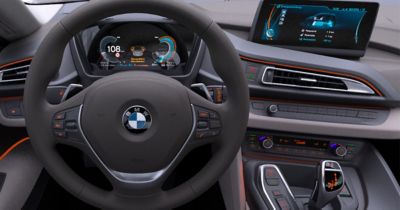-
United States -
United Kingdom -
India -
France -
Deutschland -
Italia -
日本 -
대한민국 -
中国 -
台灣
-
Ansys s'engage à préparer les étudiants d'aujourd'hui à la réussite, en leur fournissant gratuitement un logiciel de simulation.
-
Ansys s'engage à préparer les étudiants d'aujourd'hui à la réussite, en leur fournissant gratuitement un logiciel de simulation.
-
Ansys s'engage à préparer les étudiants d'aujourd'hui à la réussite, en leur fournissant gratuitement un logiciel de simulation.
-
Contactez-nous -
Carrières -
Étudiants et universitaires -
-
S'inscrire -
Déconnexion -
Espace client -
Support -
Communautés partenaires -
Contacter le service commercial
Pour les États-Unis et le Canada
+1 844.462.6797
-

In the rapidly evolving automotive industry, the role of lighting transcends beyond mere functionality. Today’s vehicle lighting systems are integral to safety, design, and brand identity. As automakers race to innovate, the Ansys Optics product collection has emerged as a critical tool, enabling engineers and designers to revolutionize vehicle lighting with unprecedented precision and creativity.
The Role of Vehicle Lighting in Modern Automobiles
Modern vehicles are equipped with advanced lighting systems that go far beyond simple illumination. Headlights, taillights, and interior lighting now incorporate sophisticated technologies like LED, OLED, and laser lights, which are not only more efficient but offer enhanced design flexibility. These systems are integral to vehicle safety, ensuring better visibility in adverse conditions and improving the detection of pedestrians and other obstacles. Additionally, lighting plays a crucial role in shaping a vehicle’s aesthetic appeal and brand identity. Automakers are increasingly using signature lighting patterns to distinguish their models and create a recognizable brand presence on the road.
Challenges in Vehicle Lighting Design
Designing vehicle lighting systems that are both functional and visually appealing is a complex process. Engineers must consider factors such as light distribution, energy efficiency, thermal management, and compliance with safety regulations. Additionally, the integration of lighting into a vehicle’s design must account for aesthetic considerations, such as color, shape, and brightness, while ensuring that the lights perform optimally under various environmental conditions.
Traditional design methods often involve a trial-and-error approach, which can be time-consuming and costly. Physical prototypes are expensive to produce, and adjusting designs late in the development process can lead to significant delays. Moreover, the increasing complexity of lighting systems, with the integration of sensors and adaptive features, adds another challenge.
Ansys Optics: A Game Changer in Vehicle Lighting
Ansys Optics solutions are addressing these challenges by providing powerful simulation tools that enable engineers and designers to innovate with confidence. Using advanced optical simulation software, Ansys Optics solutions allow for the virtual prototyping of lighting systems, enabling the exploration of design iterations without the need for physical prototypes.
Precision in Optical Simulation
The Ansys Optics product collection offers unparalleled precision in simulating the behavior of light in a vehicle lighting system. It enables engineers to model the optical properties of materials, predict light distribution patterns, and optimize the performance of lighting components. This precision ensures that the final design meets the required specifications for brightness, color, and energy efficiency while adhering to safety standards.
Accelerating Design Cycles
One of the most significant advantages of using Ansys Optics solutions is the reduction in development time. By simulating and validating designs virtually, teams can quickly identify and rectify issues before they escalate into costly problems. This acceleration of the design cycle is critical in an industry where time to market is a key competitive factor.
Enabling Innovation and Creativity
Ansys Optics solutions not only enhance efficiency but foster innovation. Designers are no longer constrained by the limitations of physical prototyping. They can experiment with bold, new concepts, such as dynamic lighting effects, intricate light patterns, and adaptive lighting systems that respond to environmental conditions in real time. This creative freedom enables automakers to differentiate their vehicles and create lighting designs that are both functional and iconic.
Integration With Other Ansys Tools
Another advantage of the Ansys Optics product collection is its integration with other Ansys simulation tools. This seamless connectivity allows for comprehensive multiphysics simulations, where lighting design can be evaluated in the context of thermal management, structural integrity, and aerodynamic performance. This holistic approach ensures that the final product is optimized across all aspects of design and functionality.
The Future of Vehicle Lighting With Ansys Optics
As the automotive industry evolves, the demand for advanced lighting systems only grows. Autonomous vehicles, electric cars, and connected vehicles will all require sophisticated lighting solutions that enhance safety, efficiency, and user experience. The Ansys Optics product collection is poised to play a pivotal role in this evolution, empowering engineers and designers to push the boundaries of what is possible in vehicle lighting.
In the future, we can expect to see even more dynamic and interactive lighting systems, personalized lighting experiences, and integration with advanced driver assistance systems (ADAS). Ansys Optics solutions will be instrumental in bringing these innovations to life, ensuring that they are not only visually stunning but meet the highest standards of safety and performance.
In the quest to revolutionize vehicle lighting, Ansys Optics solutions stand out as a powerful ally for engineers and designers. By providing precise simulations, accelerating design cycles, and enabling unprecedented creativity, the Ansys Optics product collection is driving innovation in the automotive industry. As vehicle lighting continues to play a critical role in safety, design, and brand identity, Ansys Optics solutions will remain at the forefront, helping to shape the future of automotive lighting.
The Advantage Blog
The Ansys Advantage blog, featuring contributions from Ansys and other technology experts, keeps you updated on how Ansys simulation is powering innovation that drives human advancement.













